Great turnout for this trip with over twenty meeting on The Green at Worsley for a guided tour by Manchester’s most renown industrial archaeologist, Dr Mike Nevell. Mike was based at the University of Manchester Archaeology Unit for many years and later becoming Head at the University of Salford’s Centre for Applied Archaeology. Mike is now the Industrial Heritage Support Officer for Historic England based at the Ironbridge Gorge Museum. We all met at the monument to Francis Egerton, the 3rd Duke of Bridgewater, who was responsible for the whole coal mining development in the Worsley area and is famous for commissioning the first industrial canal in Britain.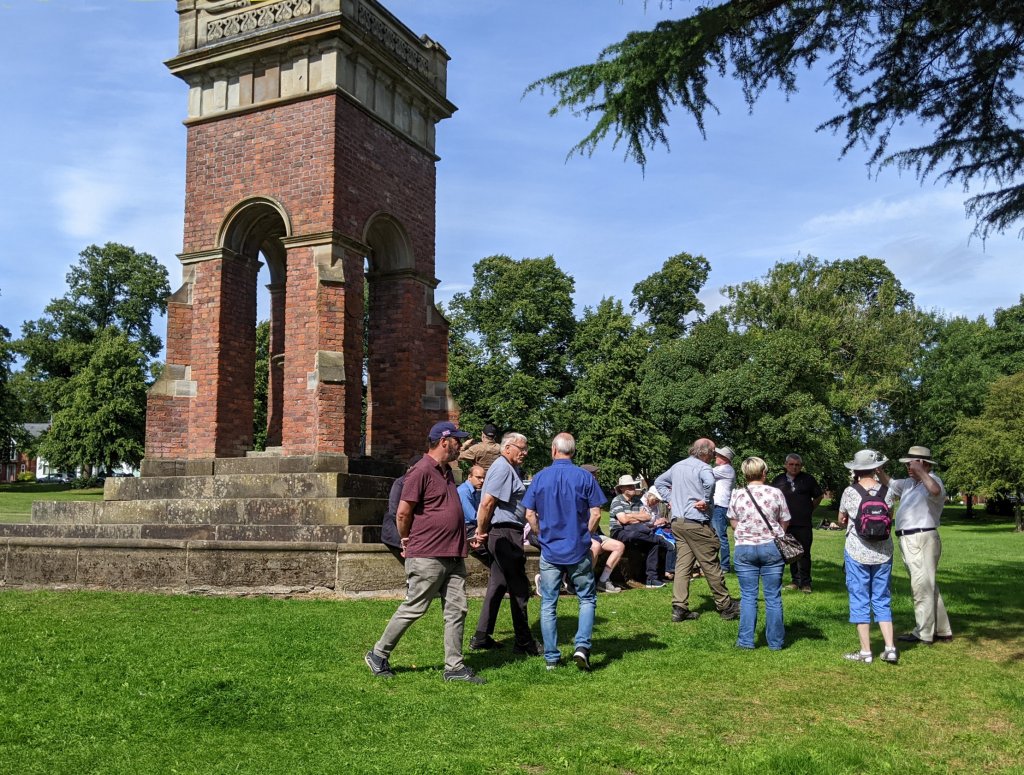
Mike explained that the chocolate box vista we see today belies the scene two and a half centuries ago when this area was a hive of industrial activity. Workshops, mills, forges, boatyards, cranes and later railways and steam engines covered the whole area. The Delph itself started as a small stone quarry but in the 17th century it was realised that the coal measures which outcropped in the valleys could be further exploited by digging a tunnel into the quarry side. Eventually though rising water in the mines and transportation of the coal on the poor road system, prevented further exploitation. The Duke’s land agent, John Gilbert, however came up with the answer to solve both both problems – a tunnel canal filled with water from mines. In 1759 a bill was passed in Parliament and by 1761 the canal was built. By 1765 the over-ground section was completed, extending the system from the Delph basin into the heart of Manchester at Castlefield.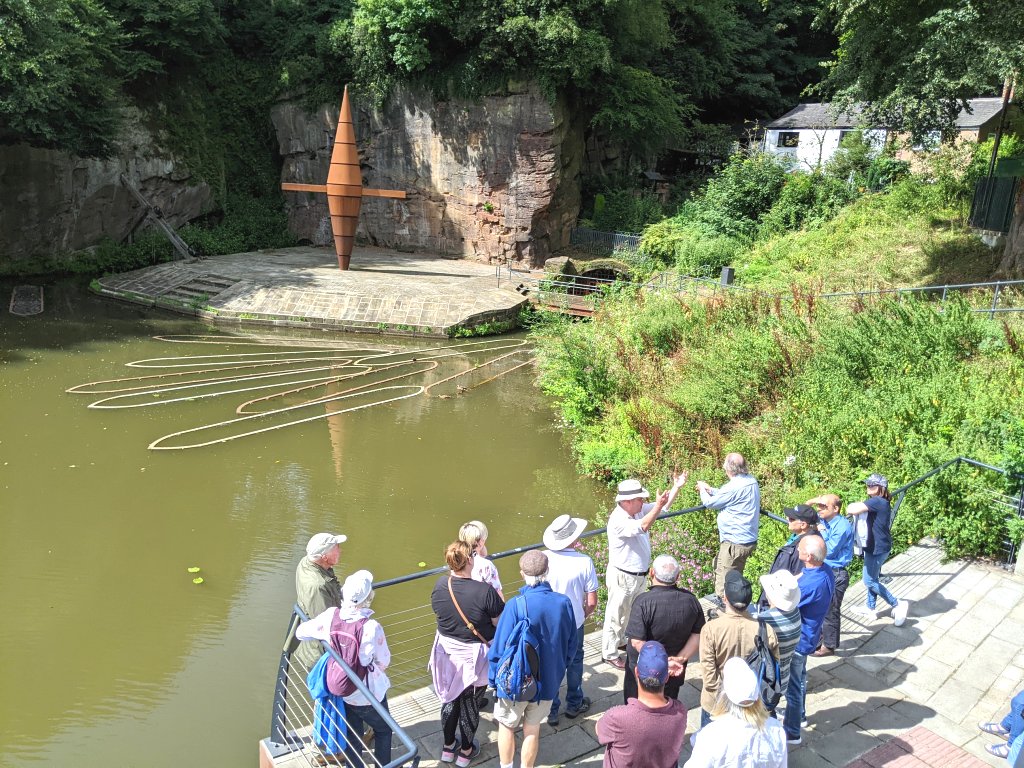 Initial it was just to serve the domestic market but as more and more mills sprung at the beginning of the 19th century, the demand for the Duke’s coal became immense. At its height a million tons of coal a year were being extracted from over 47 miles of tunnelling on three different levels. To relieve congestion a second tunnel was constructed at the Delph which joined with the original about 500 yards in. Special boats were used to access the narrow tunnels, these known as starvationer boats due to the internal ribs on display.
Initial it was just to serve the domestic market but as more and more mills sprung at the beginning of the 19th century, the demand for the Duke’s coal became immense. At its height a million tons of coal a year were being extracted from over 47 miles of tunnelling on three different levels. To relieve congestion a second tunnel was constructed at the Delph which joined with the original about 500 yards in. Special boats were used to access the narrow tunnels, these known as starvationer boats due to the internal ribs on display. 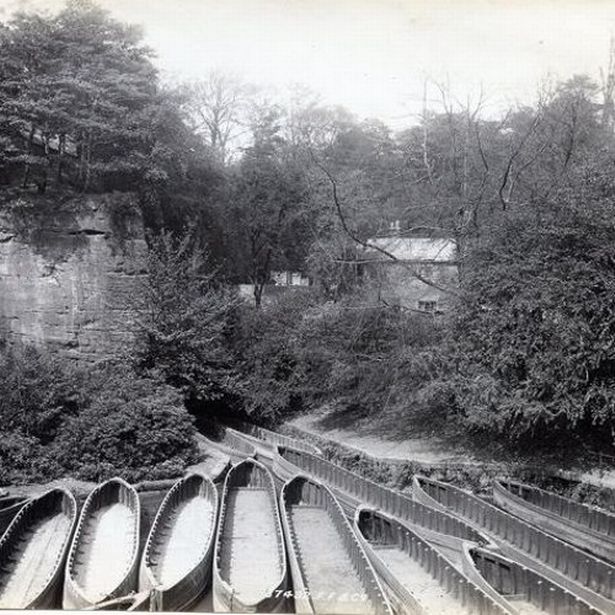 The only one to survive is housed in the Boat Museum at Ellesmere Port.
The only one to survive is housed in the Boat Museum at Ellesmere Port.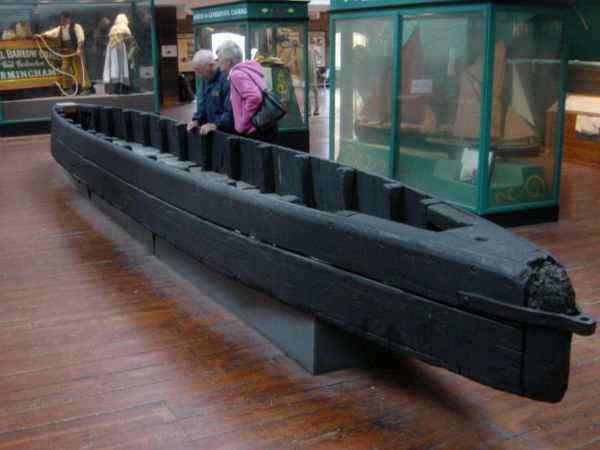
Mike took us to the canal side where he explained the development of the coalfield which in its heyday stretched as far as Farnworth. By the middle of the 19th century shaft were being dug down to the mines in and around the Walkden area. By the end of the century the majority of the mining operations had moved to Walkden with the coal being transported by rail, thus making the industrial complex at Worsley redundant. It became derelict and an eyesore. 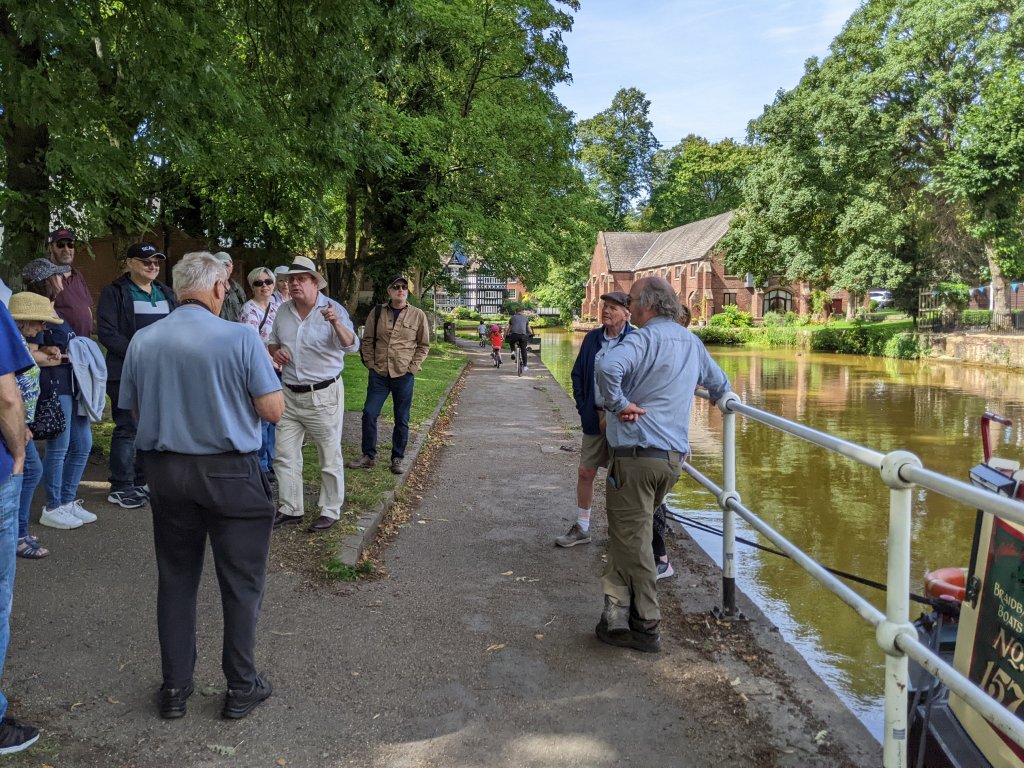
However at the beginning of the 20th century it was decided to re-landscape the whole area with all the industrial buildings being demolished. The green was created that we see today surrounded by a new housing development. Over the years various schemes have attempted to clean up the Delph are itself. In 2019 a 5.5 million pound restoration plan was initiated funded by the National Lottery Heritage Fund, Salford council, and Bridgewater Canal Company. Now the area is a much loved tourist attraction enjoyed by canal users as well as walkers and cyclists but how many are aware of its industrial heritage. 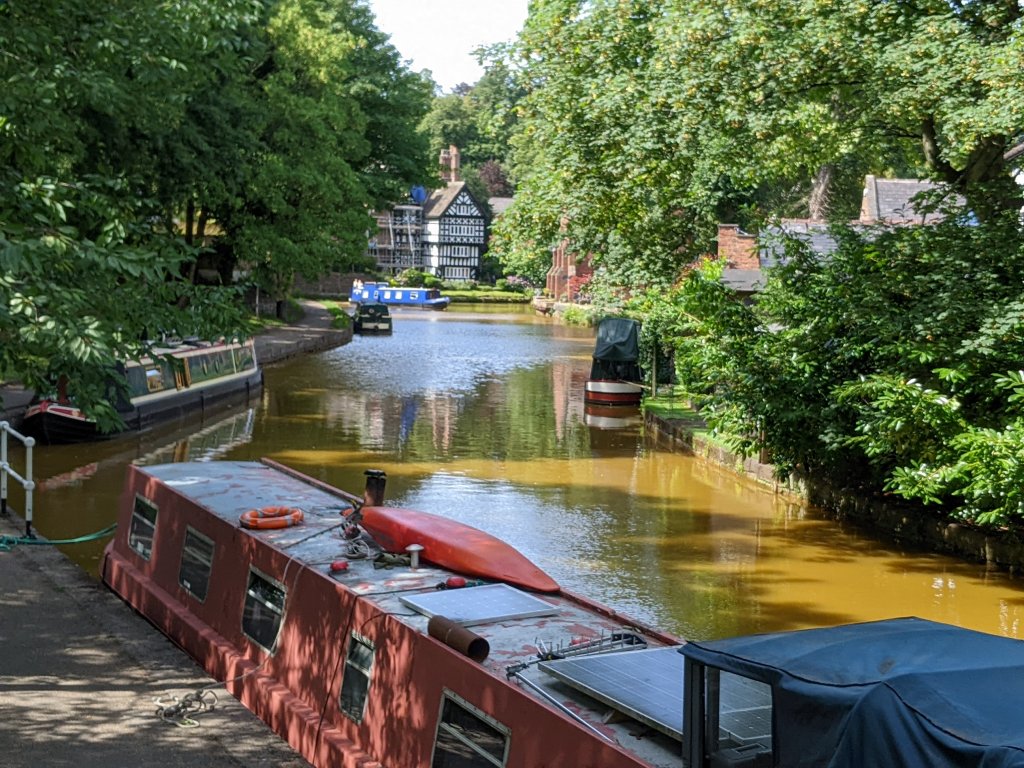
The Wigan Archaeological Society
Project Blog
